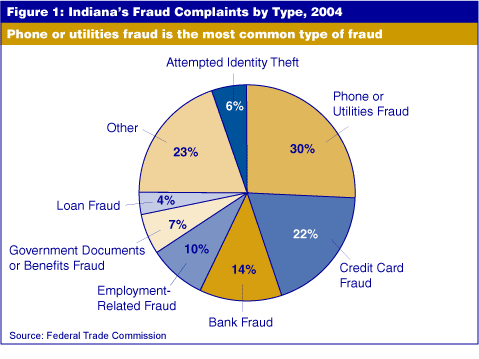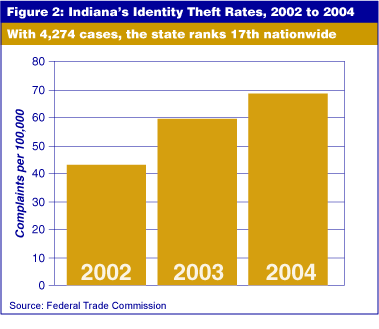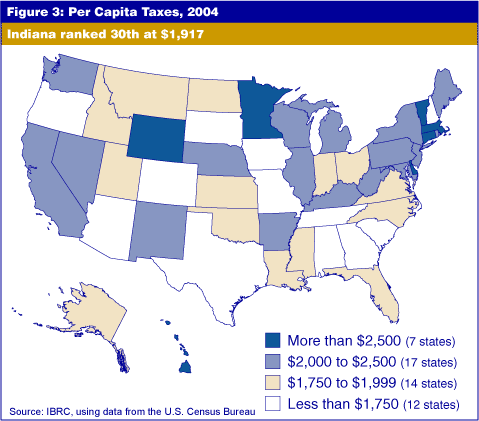Identity Crisis
We hear a lot about identity theft in the news. Searching the Indianapolis Star for articles with the phrase “identity theft” between January and April of this year, you would come across at least 15 articles. The New York Times mentions it in 49 articles during the same time period. According to the Federal Trade Commission (FTC), “Identity theft occurs when someone possesses or uses your name, address, Social Security number, bank or credit card account number, or other identifying information without your knowledge with the intent to commit fraud or other crimes.”
The thief may get your information by a number of low- or high-tech methods. This might involve rummaging through your trash (so-called “dumpster-diving”) or completing a change of address form to divert your mail to another location. Once a thief has your information he (or she) may run up the credit cards that belong to you or get a car loan in your name, all of which would be reflected on your credit report.
In 2004, the FTC received more than 635,000 consumer fraud and identity theft complaints. Of those, 61 percent were consumer fraud related (about 387,350) and 39 percent were identity theft complaints. Losses from fraud reported by consumers totaled more than $547 million. Figure 1 shows the breakdown of fraud cases in Indiana.

In 2004, Arizona had the highest per capita rate of reported identity theft (142.5 victims per 100,000 population), followed by Nevada and California. If the District of Columbia were included in the list of states, it would actually beat out Arizona to top the list (166.6). The major metropolitan areas with the highest per capita rates of reported identity theft were Phoenix-Mesa-Scottsdale, Arizona (182.2); Riverside-San Bernardino-Ontario, California (166.6); and Las Vegas-Paradise, Nevada (163.8).
But how do Hoosiers fare in all of this? Indiana is not in the top 10, but it’s not in the bottom half either. With 4,274 reported victims of identity theft, Indiana ranks 17th with a rate of 68.5 (see Figure 2). Among major metropolitan areas, the Indianapolis metro area ranks 22nd with 1,375 complaints, a rate of 90.2 per 100,000.

To find out more about identity theft in Indiana and what you can do to protect yourself, visit the Federal Trade Commission’s ID Theft website at www.ftc.gov/bcp/edu/microsites/idtheft/. Residents of Indiana can order free credit reports (one report every 12 months) at www.annualcreditreport.com or by calling 1-877-322-8228.
Indiana State Tax Collections
Tax collections by state governments were up 8.1 percent in 2004 to reach $593 billion—a $44 billion increase from the previous year. State tax collections in Indiana amounted to just under $12 billion in 2004, up from $11.2 billion in 2003, a 6.6 percent increase. According to data from the 2004 Annual Survey of State Government Tax Collections (https://www.census.gov/data/tables/2004/econ/stc/2004-annual.html), Indiana sales taxes were up 11 percent to $6.9 billion, and individual income taxes increased by 3.9 percent to $3.8 billion. These two taxes made up 89.6 percent of all Indiana state tax collections.
Nationally, per capita taxes collected by states averaged $2,024 (see Figure 3). Per capita taxes were highest in Hawaii ($3,048) and Wyoming ($2,968). They were lowest in Texas ($1,367) and South Dakota ($1,378). Indiana ranked 30th ($1,917), nestled between Kansas ($1,931) and Virginia ($1,908).

Daina Bohr and Frank Wilmot
Indiana State Library
